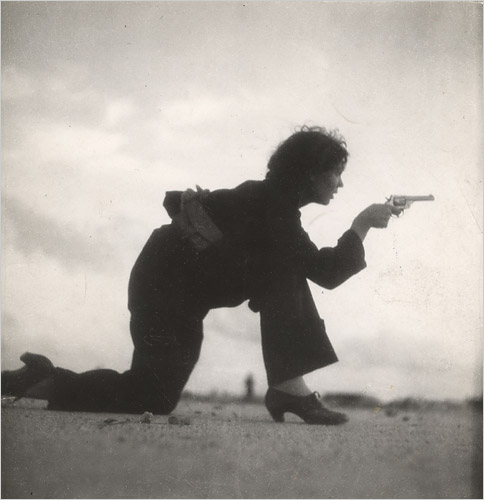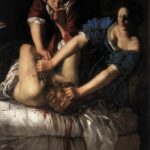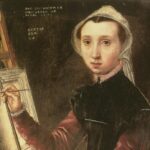
Editor’s Note: In honor of Women’s History Month, we’re sharing profiles of remarkable women in art we think you should know (if you don’t already).
Today, when we watch the news or read an article about a conflict, we expect visual imagery. How can we understand the magnitude of the bombs if we don’t see the explosions? How can the scale of human suffering be conveyed if we don’t see the images of sprawling refugee camps, of bombed-out cities, of twisted metal or mass graves?
War photography is a genre of photojournalism that has greatly aided people’s ability to understand the brutal realities of war – especially for those who have never been in a war zone. As photography developed over the course of the 19th century, it was only natural that at some point an intrepid photographer would bring their lens to the battlefield, to document in real time what had never before been documented.
While there are early photographs from the Mexican-American War (1846-1848), the American Civil War (1861-1865), and the Crimean War (1853-1856), they were all taken by men. German-born Gerda Taro is widely thought of as the world’s first female war photographer.
Born Gerta Pohorylle, in 1910 in Stuttgart, Germany. She studied through high school and even attended college to study business – but as the Nazis rose to power in the 1930s, her future was forever changed.
Taro was Jewish and heavily involved in anti-Nazi activist work. In 1933, she was arrested for “distributing propaganda” — that is, literature explaining the dangers of the Nazi party. Though she was released from jail, Taro and her family knew it was time to leave Germany. The Pohorylle family splintered: Taro fled to Paris, her brothers went to the United Kingdom and her parents went to Palestine. She would never see her family again.
In Paris, she found work as a photographer’s assistant, a Jewish man named Endre Freidmann who had similarly fled eastern Europe as anti-semitic politics were on the rise. The two became romantically involved, and changed their names. Gerta Pohorylle became Gerda Taro and Endre Friedmann became the legendary Robert Capa, their new names designed to protect their Jewish identities. Taro quickly became a talented photographer in her own right, and the two focused much of their work documenting the political turmoil of 20th century Europe.
When the Spanish Civil War broke out in 1936, Taro (and Capa) immediately went south to photograph the conflict. Her photos of the war are intimate and heart wrenching – wounded soldiers, dead women and children – life destroyed by the violent chaos of warfare.
One of her most famous portraits from the Spanish CIvil War is of a young woman, knee down to the ground, holding a pistol. She points her gun to a target out of frame. She is laser-focused on the target, and judging by her heeled shoes and lack of a military uniform – she is practicing shooting, not actually doing it. It is a portrait of an ordinary woman, who prior to a civil war breaking out in her own country, was not involved in the army. But now here she is, gun in hand, getting ready to fight. (Nearly 90 years later, another female photojournalist, Lynsey Addario, would photograph women civilians training for war in Ukraine, in photos that eerily echo this portrait.)
Like many brave souls who came after her, Taro herself would lose her life documenting the Spanish Civil War. In 1937, at the age of just 26, she tragically died of injuries sustained while escaping bombardment; she jumped onto the roof of a car that a tank then collided into.
War photography, with its violent, sometimes deeply shocking, often heartbreakingly tragic images, draws viewers into worlds being torn apart – and in the best instances, offers us the possibility of understanding conflicts taking place far from home. ◼
Victoria Flexer, author of “A History of the World in Ten Dinners,” received her master’s degree in historical studies from The New School. She specializes in sharing history through food, art and culture.



